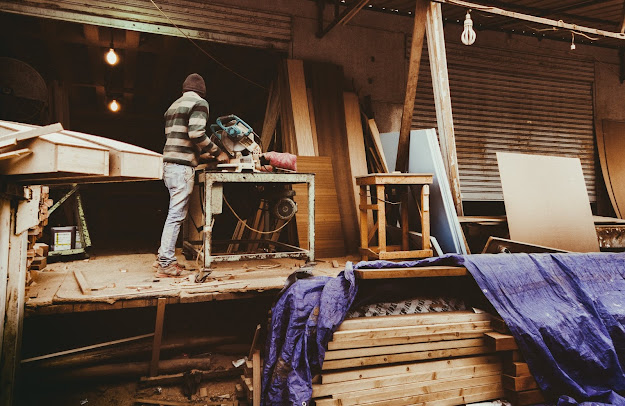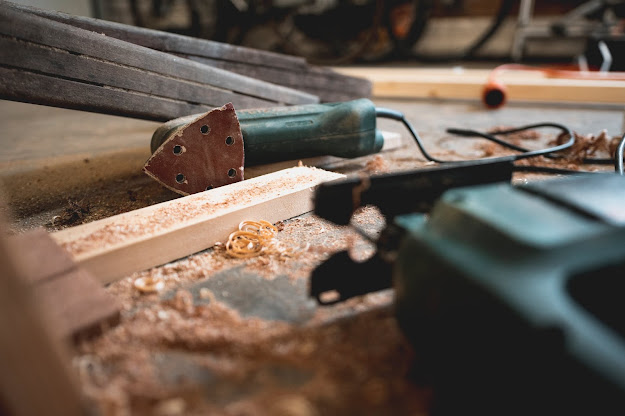5 Mistakes When Choosing The Laminate Flooring
 |
1. Wrong choice of wear resistance class:
The most common mistake is the wrong choice of wear resistance class. The parameter affects the price, so many in an effort to save money take the cheapest option, forgetting that it is not suitable for rooms with high traffic. A typical case: the happy owners of a new building took a beautiful, but cheap product and bed it all over the apartment, including the entrance hall. And after a couple of rainy seasons, it deteriorated from constantly increased humidity and mechanical stress.
Therefore, the first thing you need to pay attention to is the class. It shows how durable the coating is, abrasion and scratch-resistant. In specialized stores and chain hypermarkets, the entire range of decors from bleached to dark is usually presented in different classes. Therefore, you can find a suitable item in colour and texture.
Before going to the store, first of all, determine for which room you choose the flooring, the choice will depend on this. For example, for rooms with low traffic, such as bedrooms or living rooms, 31 class is suitable, and for rooms with medium traffic - kitchen, living room, nursery, corridor or office - it is better to use a more durable 32 class. For rooms that have the highest load, it is better to choose products of class 33, they can even be laid in the hallways.
For your convenience, we have compiled a summary table. It notes for which rooms which class of laminate is better to choose.
2. Wrong thickness
The second important parameter that determines the quality and performance is the thickness of the board. It affects how noisy the flooring will be, that is, the thinner the better the neighbours will hear your steps.
The thickness of the cheapest product starts from 6 mm, and the thickness of the boards in the expensive 33 class coating can reach 12 mm, as in a parquet board. Lovers of money often come across this, who choose a product level higher, but do not take into account the thickness, as a result, they get a scratch-resistant, but the very "noisy" floor.
What thickness of the laminate to choose for the apartment? If heavy furniture and equipment are installed in the room, it is better not to use a coating thinner than 10 mm, otherwise, it will not withstand long static loads. However, if you plan to lay the slats on a warm floor, choose thinner boards, as they will better allow heat to pass through.
3-Inappropriate Shade:
To make the room look harmonious and visually “not fall apart” into separate parts, all finishing materials must be designed in the same colour scheme - warm or cold, even if they are in contrasting shades, such as a dark floor and bright doors.
If you want to visually expand a small room, use light cold tones in the decoration, and if you want to make too large a space more comfortable, choose a warm colour scheme.
When choosing, we advise you not to rely only on memory, but be sure to take samples of the materials that you plan to use in the interior, and watch how they fit before you buy.
4. Moisture resistant laminate is mixed up with waterproof
Humidity is one of the main enemies of this material: if water gets into the joint, its boards easily absorb and swell, irregularities appear from this and the decorative coating departs. Manufacturers have taken this feature into account and offer waterproof options that can be stacked in rooms such as a kitchen and even a bathroom. If you decide on such an experiment, the main thing is not to mix up the waterproof and waterproof laminate.
What is the difference? A moisture-resistant fibreboard is the basis of high strength, it is treated with paraffin and other compounds that can protect the board from moisture only for a while. This coating will withstand various contaminants and wet cleaning, prevent the development of mould and fungus. But if you do not immediately wipe the water from the surface, it will penetrate into the joint, the finish will begin to deform and rise, as a result, the floor will become uneven. Moisture-resistant laminate changes its volume with temperature changes, so it is suitable only for kitchens and hallways. But for the bathroom, sauna, balcony or porch, it is no longer suitable.
Only a waterproof type can survive direct contact with water. It is able to withstand prolonged exposure to water, is not deformed by temperature changes and practically does not wear out. All joints of a waterproof floor are treated with heated wax, and the surface is not slippery and gives it antistatic properties so that dust does not settle on it.
5. Thoughtless savings on the substrate
Another typical situation when, when preparing estimates for repairs, they forget to turn on the substrate. As a result, you have to spend time on additional trips to the store. Or they take the cheapest version of the substrate if the entire budget has been spent, and then they regret it very much. After all, a high-quality substrate not only levels the concrete surface but also provides additional noise and heat insulation, softens the shock load and extends the service life of the floor covering up to 5 years.
A cheap substrate has a big but unobvious minus - the smell. Of course, the unpleasant odour will disappear, but from this, the substrate will not stop releasing chemicals that can be toxic and cause allergies. Therefore, we recommend that you do not save and choose options from natural materials, for example, cork or coniferous substrate.
The technical plug is not electrified, which means it does not attract dust, does not absorb odours, is hypoallergenic and contributes to the natural regulation of the indoor climate in the room. A coniferous substrate is made of 100% natural materials - coniferous wood. It significantly reduces the “shock” noise, the room will become significantly warmer due to the low thermal conductivity of the material. The density of the coniferous substrate is selected in such a way as to smooth out small irregularities of the “rough” floor and protect the locks from excessive pressure.
The final elements include skirting boards of various heights, widths, configurations, as well as lining on the inlet openings of the elements of the heating system and sills.

Comments
Post a Comment